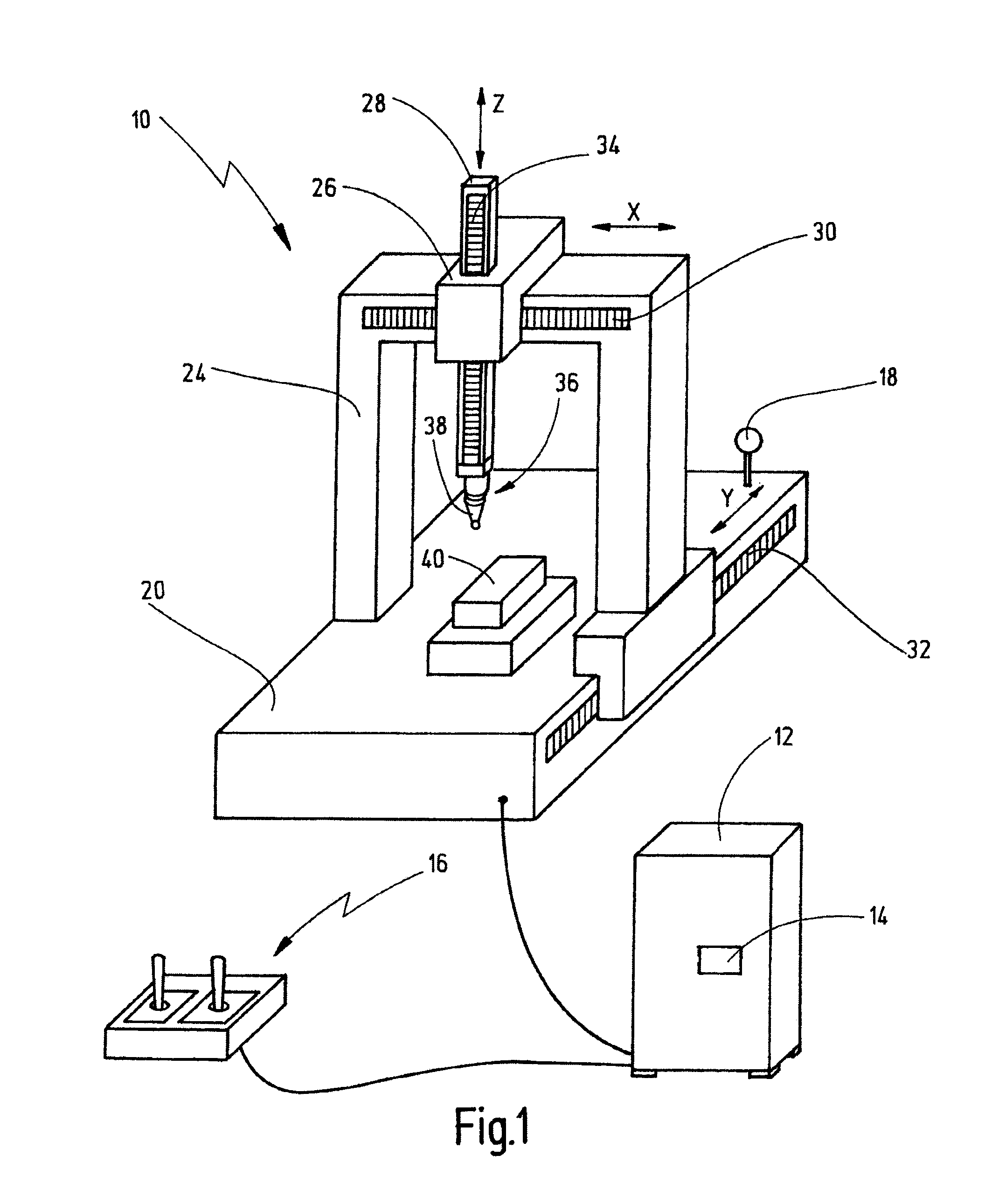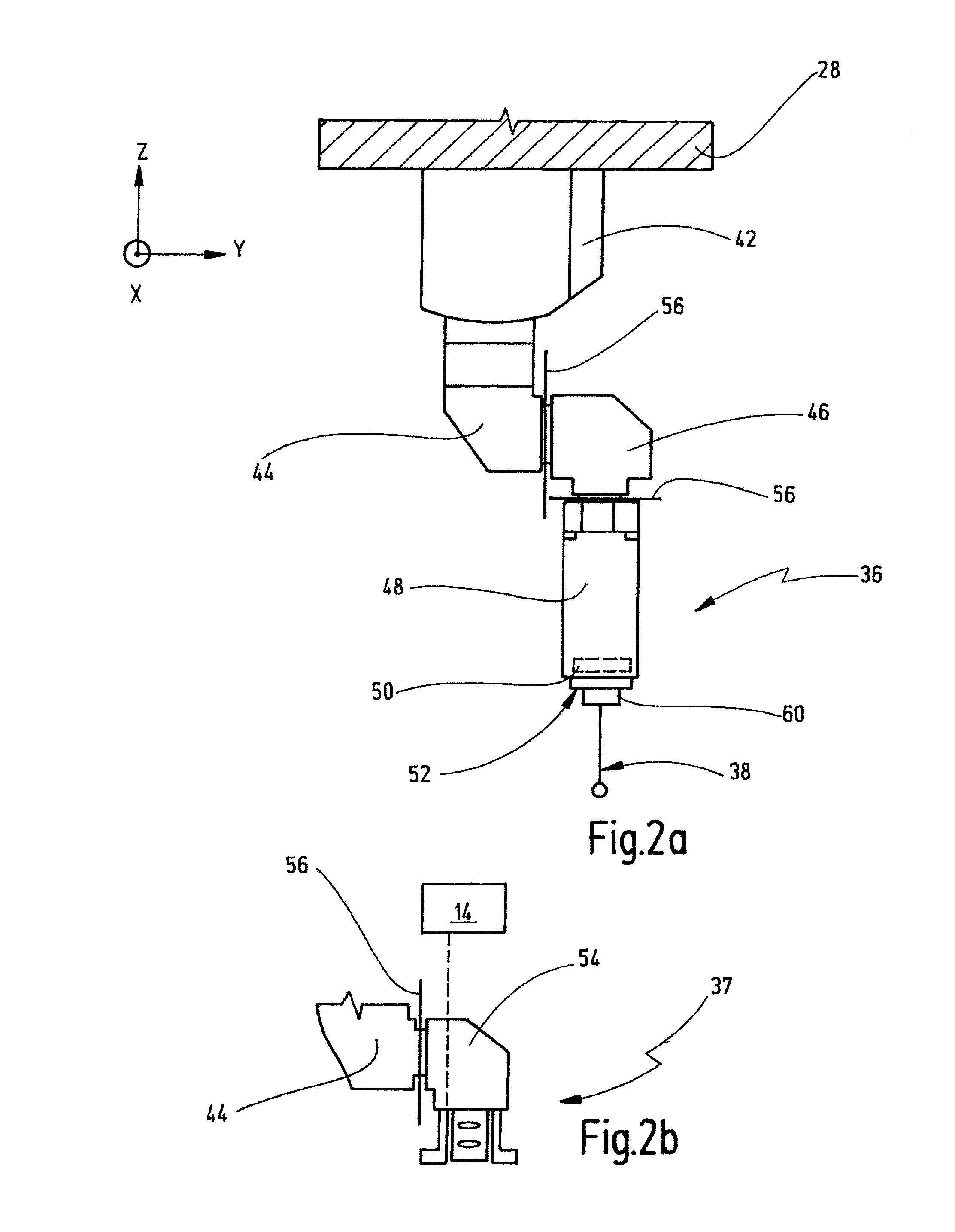Method for coupling two system components of a measuring device, in particular a coordinate measuring device
a technology of coordinate measuring and measuring device, which is applied in the direction of measurement device, electric/magnetic measuring arrangement, instruments, etc., can solve the problems of inability to carry out continuous radio transmissions with full bandwidth, inability to carry out continuous measurement, and inability to guarantee the accuracy of the measurement, so as to reduce the amount of inspection required, increase the security of emc, and save the effect of electrical transmission path
- Summary
- Abstract
- Description
- Claims
- Application Information
AI Technical Summary
Benefits of technology
Problems solved by technology
Method used
Image
Examples
Embodiment Construction
[0082]FIG. 1 shows a measuring device, which is formed as coordinate measuring device 10. In principle, the measuring device may also be a part of a machine tool or manufacturing machine. The invention will, however, be described below with reference to the example of a coordinate measuring device 10.
[0083]The coordinate measuring device 10 comprises a control unit 12 for controlling the coordinate measuring device 10. The control unit 12 comprises a computation unit 14, for example a computer.
[0084]The control unit 12 is represented merely schematically as a block, although in principle the control unit 12 may comprise all elements necessary for controlling the coordinate measuring device 10, for example keypads, monitors or a control panel 16. Furthermore, the control unit 12 also comprises an output means in order to output the data obtained by the coordinate measuring device 10 in a suitable form, for example electronically or in paper form. Although the coordinate measuring dev...
PUM
 Login to View More
Login to View More Abstract
Description
Claims
Application Information
 Login to View More
Login to View More - R&D
- Intellectual Property
- Life Sciences
- Materials
- Tech Scout
- Unparalleled Data Quality
- Higher Quality Content
- 60% Fewer Hallucinations
Browse by: Latest US Patents, China's latest patents, Technical Efficacy Thesaurus, Application Domain, Technology Topic, Popular Technical Reports.
© 2025 PatSnap. All rights reserved.Legal|Privacy policy|Modern Slavery Act Transparency Statement|Sitemap|About US| Contact US: help@patsnap.com



